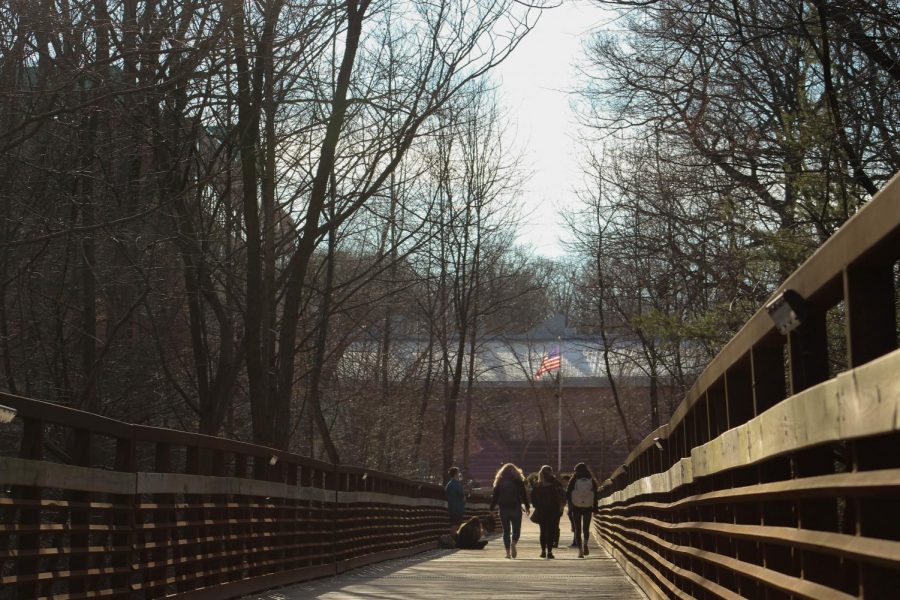Earth: Keep it clean this spring
April 1, 2019
AACC students can take small steps to clean up the planet—right here on campus—in celebration of Earth Day on April 22.
First, students in Humanities and CALT can fill up their water bottles at those buildings’ automatic fountains.
With this feature, students can place their bottles under the fountain and the water will automatically fill them, without anyone holding down a button.
Not only does this defeat the hassle of using two hands to fill up a water bottle, but it also saves thousands of pounds of plastic bottle waste that otherwise would flood trash cans across campus, according to a digital tracker on each fountain.
Next, students can conserve energy by walking across the footbridge that connects the east and west sides of the campus, instead of driving.
Although it may seem more convenient to drive from one side of campus to the other to get to class, the bridge eliminates the necessity for carbon emissions from burning gasoline. And Mother Nature gives back with sunlight, fresh air and a view of Dividing Creek.
This body of water is maintained by the Environmental Center on campus and leveled off in layers of running streams to reduce runoff and preserve native plants and wildlife.
Also, students can tell AACC faculty members and administrators which environmentally friendly features they’d like to see in the new buildings going up around campus. Send an email to the Facilities, Planning and Construction staff to share your ideas.
Who knows, the ideas you have today could set up future students to take even bigger steps toward changes in the health of the campus and the planet.
The college has built some environmental benefits into campus buildings already.
The Ludlum Building and Truxal Library on campus are both LEED certified, which means their features focus on reducing waste, conserving water, supporting efficient transportation and elevating the human experience.
The college is aiming to achieve gold LEED certification for the Health and Life Sciences Building under construction on campus. It will feature habitat protection, materials and colors that reflect heat, low-flow toilets and faucets, and quieter, more efficient HVAC equipment.
Campus Facilities, Planning and Construction also will conserve plant species during the building’s construction by replacing lost greenery from site work to create a “living wall” on the side of the Physical Plant Building.
Along with this, the college will renovate the Dragun Science Building with environmental factors starting in 2020, at a cost of $34,336.
If every student makes these small changes, we can together create a domino effect that could inspire other colleges to pay more attention to the environment, too.












